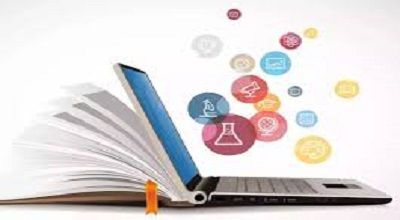What Are Education Tools?
Education Tools refer to the various resources, techniques, and technologies. That is used to enhance teaching and learning. These tools can be physical or digital and may include textbooks, whiteboards, computers, software, apps, educational games, videos, and interactive online platforms.
Education tools are designed to support the acquisition and retention of knowledge. Facilitate communication and collaboration. And help learners develop critical thinking, problem-solving, and other important skills. They can be used in a variety of settings, such as classrooms, libraries, homes, and workplaces. And can be customized to meet the needs of individual learners.
The use of educational tools is becoming increasingly important in today’s rapidly changing world, where the demand for new skills and knowledge is constantly increasing. As a result, educators are using a wide range of tools to create engaging and effective learning experiences for students of all ages and backgrounds.
How To Use Education-Tools In Class Room?
There are many ways to use educational tools in the classroom to enhance teaching and learning. Here are some examples:
- Interactive whiteboards: Use an interactive whiteboard to display educational videos, interactive activities, and digital presentations to enhance students’ engagement and understanding of the lesson.
- Educational games: Use educational games to reinforce concepts and skills learned in the classroom. These games can be used as a fun and engaging way to review material or introduce new concepts.
- Online learning platforms: Use online learning platforms to create an interactive and collaborative classroom environment. These platforms can be used to deliver course content. Facilitate discussion forums, and track student progress.
- Smartphones and tablets: Use smartphones and tablets to provide students with access to digital learning resources such as e-books, educational apps, and online quizzes.
- Virtual field trips: Use virtual field trips to transport students to different locations around the world and provide them with immersive learning experiences.
- Classroom response systems: Use classroom response systems to facilitate student engagement and feedback. These systems allow students to respond to questions in real-time, providing valuable feedback to the teacher.
Overall, education tools can be used in a variety of ways to enhance the classroom experience and improve student outcomes. The key is to identify the tools that best align with the learning objectives and goals of the lesson and to use them in a way that enhances the learning experience.
Features Of Education-Tools
Education tools can have a variety of features, depending on their intended use and target audience. Here are some common features of education tools:
Customization: Many education tools allow for customization to meet the specific needs of students and educators. This can include the ability to personalize learning materials, create custom assessments, and tailor instruction to meet individual student needs.
Interactivity: Education tools often feature interactive elements such as simulations, games, and interactive quizzes that engage learners and help them retain information.
Accessibility: Many education-tool are designed to be accessible to learners with disabilities. Or who speak different languages. This can include closed captioning, audio descriptions, and translation features.
Analytics and reporting: Many education tool offer analytics and reporting features that allow educators to track student progress, identify areas of strength and weakness, and make data-driven decisions about instruction.
Collaboration: Many education tool are designed to facilitate collaboration among students and teachers. This can include features such as discussion boards, group projects, and shared document editing.
Flexibility: Many education tool are flexible and can be used in a variety of settings. Including traditional classrooms, online courses, and blended learning environments.
Overall, education tool are designed to enhance teaching and learning by providing engaging, interactive. And personalized experiences that help students achieve their learning goals.
Advantages & Disadvantages Of Education-Tools
Advantages of education tools:
- Improved engagement: Education tools can help to keep learners engaged and motivated by providing interactive and personalized learning experiences.
- Personalization: Education tool can be tailored to meet the specific needs of individual learners. Allowing students to learn at their own pace and level.
- Flexibility: Education tools can be used in a variety of settings. Including traditional classrooms, online courses, and blended learning environments, providing more flexibility in terms of scheduling and access.
- Increased efficiency: Education tool can help to automate certain aspects of teaching and learning. Such as grading and assessment, saving educators time and effort.
- Accessibility: Education tool can make learning more accessible to learners with disabilities or who speak different languages by providing features such as closed captioning, audio descriptions, and translation features.
Disadvantages of Education-Tools
- Cost: Education tools can be expensive to purchase and maintain, and may require additional training and support for educators.
- Technical difficulties: Education-tools may encounter technical difficulties or require updates or maintenance, which can disrupt teaching and learning.
- Over-reliance: Over-reliance on education tool can lead to a lack of human interaction and face-to-face learning, which may not be suitable for all learners.
- Learning distractions: Education-tools can be a source of distraction for some learners, leading to a decrease in engagement and focus.
- Inequity: Education tool may not be accessible or affordable for all learners, which can contribute to educational inequality.
Overall, education tools have the potential to enhance teaching and learning, but it is important to carefully consider the advantages and disadvantages when selecting and implementing these tools.
Conclusion
In conclusion, Education Tools offer a variety of benefits for both educators and learners, including improved engagement, personalization, flexibility, efficiency, and accessibility. However, it is important to carefully consider the potential drawbacks, such as cost, technical difficulties, over-reliance, learning distractions, and inequity. When selecting and implementing ET, educators should consider their learning objectives, the needs of their learners, and the available resources to ensure that these tools are effective and enhance the overall learning experience.
